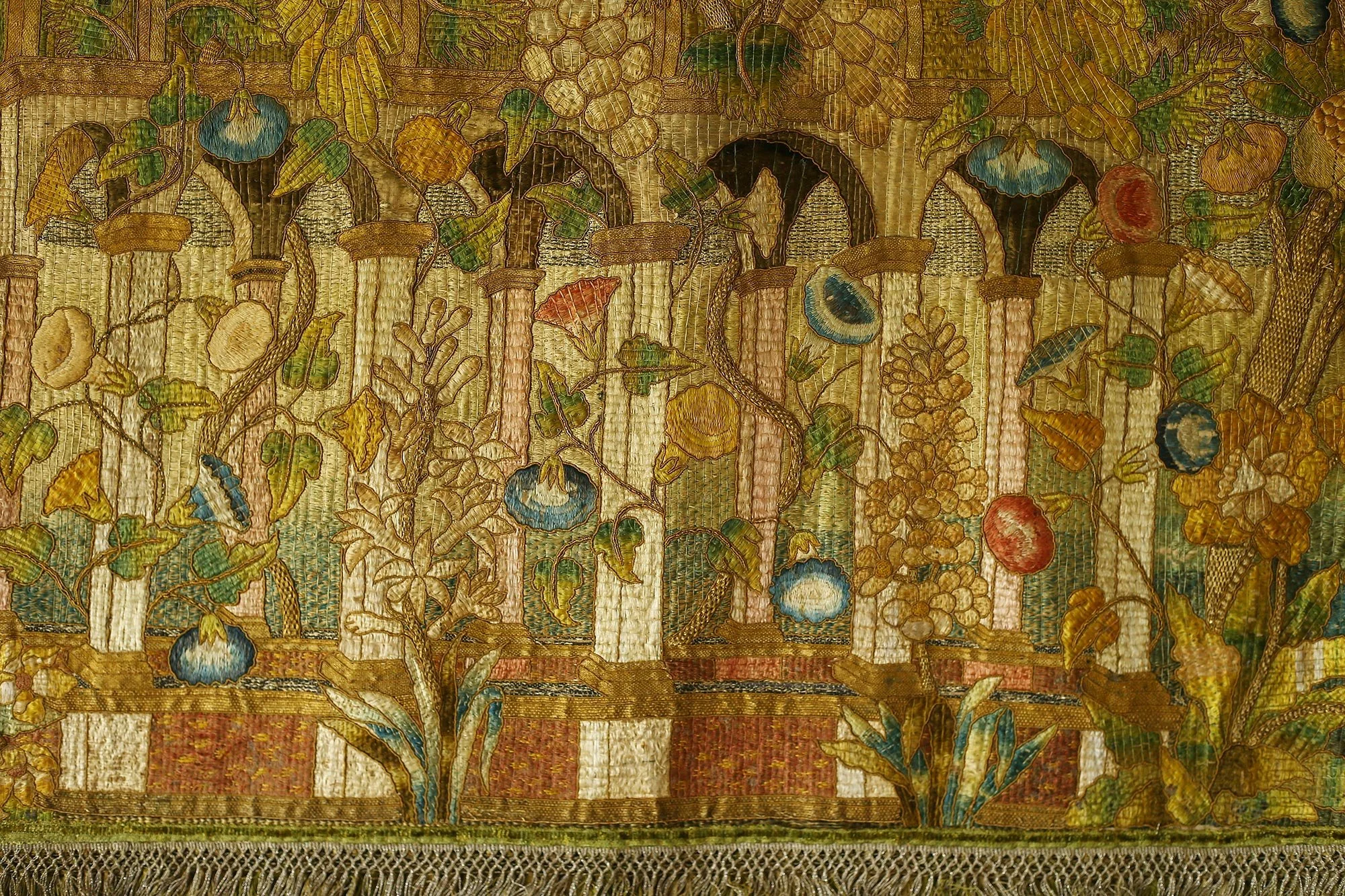Silk and metal thread Valance, Italian 17th Century.
60×488 cm
Representing Lucrezia Borgia, Duchess Consort of Ferrara, Modena, and Reggio, Duchess Consort of Bisceglie, Princess Consort of Salerno Governor of Spoleto, Lady of Pesaro and Gradara, Countess of Catignola, and the gardens of the Castello de Ferrara, Italia.
Silk and gold thread brocading on a linen foundation.
One of the most misunderstood and misrepresented figures in European Renaissance history Lucrezia Borjia was the illegitimate daughter of Cardinale Rodrigo Borjia, the Spanish Catalan born Pope Alexander VI, and sister of the infamous Cesare Borjia, “il Valentino”, and of Machiavelli renowned. Slandered in myth and throughout literature being portrayed as a ruthless adulteress and murderous femme fatale. However contrary to popular contemporary or pervasive modern narrative, although her early life was marked by scandalous upheaval and personal misfortune “in her maturity Lucrezia was an enlightened ruler, kind and dicisive in time of war, generous to the poets and artist of her court, passionate in love, and utterly indifferent to sexual immorality”.* It was said that “she carries herself with such grace that it seems as if she does not move”.
The present “valance” embroidery is a stylized depiction of the the gardens of the Palazzio de Ferrera with the Castello Estense de Ferrara top center in the composition. To the right is a marble fountain and a peacock with it’s extended plumage. A water filled canal passes through a flower and vine entwined pagoda that flows through a cypress lined passage encircling the castle and repeating to the left of the composition ending with a flowering fruit tree and a menacingly parading observant cock. Gold thread brocading is extensive throughout.
The protagonist sits center on a golden stool while seemingly eating a piece of fruit. She is distinguished by a golden cap, or beret, of which she was celebrated to have had propensity in wearing.
*Sarah Bradford-Lucrecia Borjia





